English Edition

- By CNI
- Category: English Section
- Hits: 244
CNI News
18 November 2025
Senior General Min Aung Hlaing, Chairman of the State Security and Peace Commission, stated that the groups actively undermining peace and stability in Kayin (Karen) State are the armed organizations operating within the state.
He made the statement during a meeting with state-level department officials and community elders in Hpa-An, Kayin State, on November 15, 2025.
Senior General Min Aung Hlaing said: "Since the time the country gained independence, Kayin State has suffered from the loss of peace and stability due to armed insurgency, which has affected the people living in the state as well as the entire country. The groups working to destabilize Kayin State are the armed organizations within the state itself. Only with peace and stability can young people pursue education, healthcare services be provided to the public, and regional development projects be carried out."
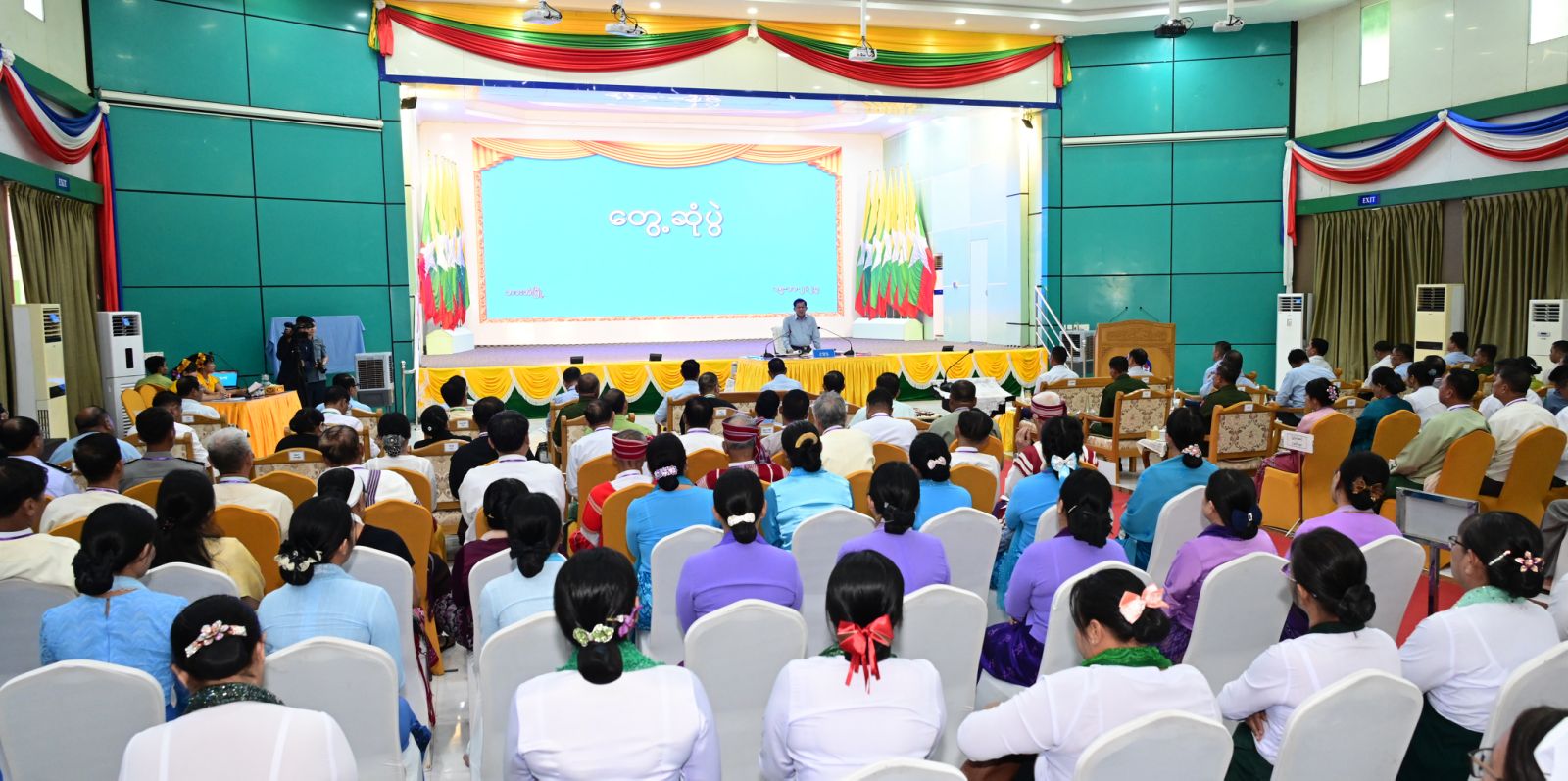
Senior General Min Aung Hlaing seen
He therefore urged the residents of the state to take action by all means necessary to prevent activities that undermine peace and stability, which damage the state's development.
Senior General Min Aung Hlaing also added: "The State is working to clear and deal with the activities that undermine peace and stability in Kayin State. The Tatmadaw is carrying out clearance operations at KK Park, near the Myanmar-Thai border, where online financial fraud and online gambling are being run, and this will be completely resolved as a national duty."
Armed groups operating in Kayin State include the Karen National Union (KNU), the Democratic Karen Benevolent Army (DKBA), the Karen National Union/Karen National Liberation Army-Peace Council (KNU/KNLA-PC), the Karen State Border Guard Force/Karen National Army (BGF/KNA), the Kaw Thoo Lei Army (KTA) led by Saw Nedah Mya (who was expelled from the KNU), the New Mon State Party (NMSP), and the People's Defence Force (PDF) groups.
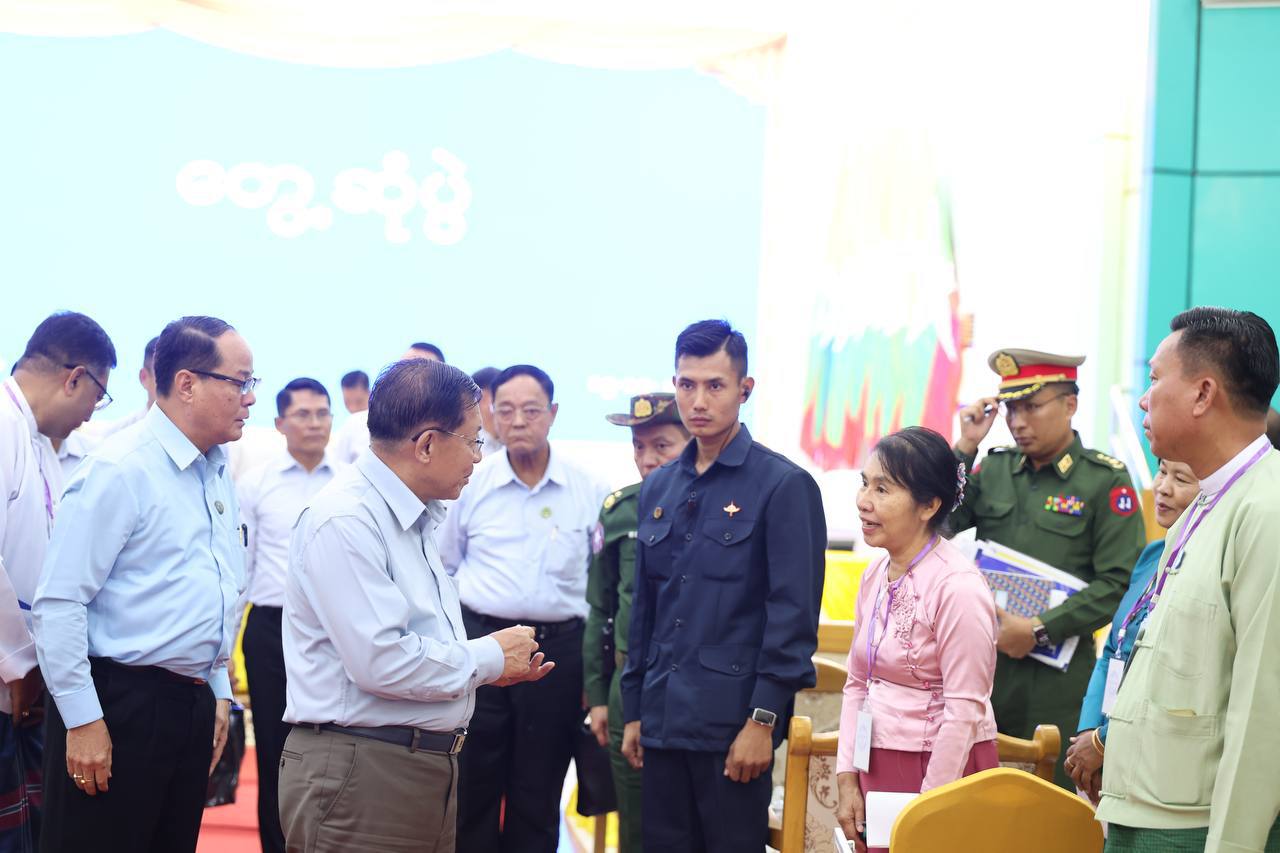
Senior General Min Aung Hlaing seen
Among these armed groups, the BGF/KNA operates under the Tatmadaw, while the DKBA, KNU/KNLA-PC, and NMSP have signed the Nationwide Ceasefire Agreement (NCA) and are not currently fighting the Tatmadaw.
The KNU has withdrawn from the NCA and is leading the PDFs in the fight to overthrow the Tatmadaw, while the KTA is also fighting the Tatmadaw.
Currently, intense fighting is ongoing between the Myanmar military and the KNU-PDF joint forces in Kayin State, leading to the suspension of trade along the Myawaddy-Kawkareik Asian Highway.

- By CNI
- Category: English Section
- Hits: 246
CNI News
18 November 2025
Military and political analysts suggest that the upcoming election in Myanmar should be one that can resolve the country's political problems.
In Myanmar, Phase 1 of the election will take place on December 28, 2025, in 102 townships, and Phase 2 will take place on January 11, 2026, in 100 townships.
U Ko Ko Gyi, Chairman of the People's Party (PP), told CNI News Agency that he wants the election in Myanmar to be directed towards how to collectively solve the current political problems.
He said: "I want this election to proceed with the objective of how to work together to resolve the current political problems, rather than just a competition like elections held under normal circumstances. I see the situation of internally displaced persons (IDPs) and war refugees as an issue that must be prioritized and tackled. Another thing is the need to invite investments that can create job opportunities in peaceful areas. So, the priority programs have already been released in the election manifesto. What is certain is that after the election, a Parliament will emerge, and those who can legally exercise power will be elected representatives. When there is no Parliament, the executive and legislative powers are combined. Therefore, I believe we will be able to review, amend, and enact laws, as well as scrutinize and check for legal compliance. So, in the current situation, I believe we should only aim to resolve this major conflict through collaboration and negotiation."

The government led by Senior General Min Aung Hlaing seen
Chairman of the State Security and Peace Commission, Senior General Min Aung Hlaing, has stated that he will transfer state power to the political party that wins the election.
Political observers point out that the new government formed after the election will likely be led by the Tatmadaw (military) and the USDP (Union Solidarity and Development Party), but including representatives from other ethnic political parties in the cabinet will help to overcome the current political crisis.
U Htet Aung Kyaw, a political analyst, told CNI News Agency that there may be hope if a new government emerges with a mix of old and new faces, but if it is formed only with old faces, the political landscape may not show any significant change from the current situation.
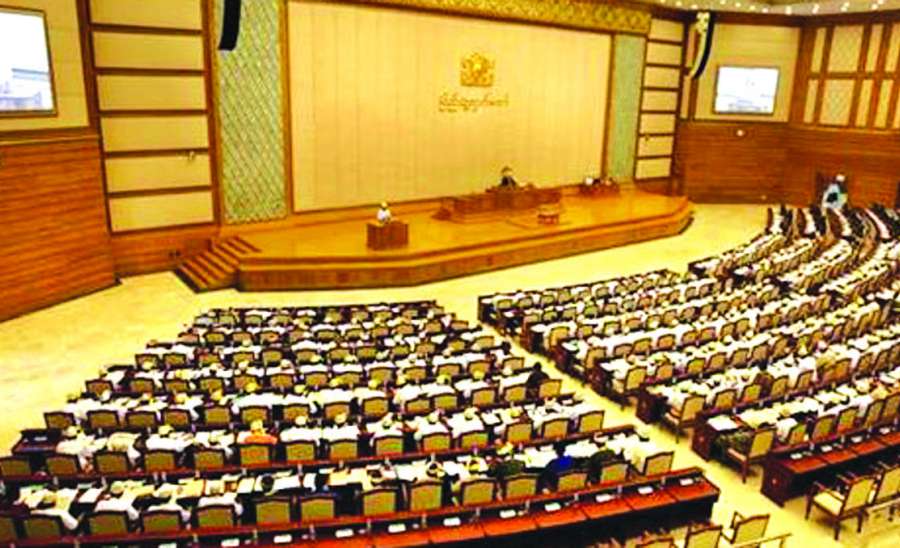
Hluttaw in session.
He commented: "As stipulated in the Constitution, Parliaments (Hluttaws) will emerge with the elected representatives and 25 percent of Tatmadaw personnel. The Parliament will then elect three presidents. The new government must form teams to resolve issues based on the will and preference of the President. So, we have to wait and see the election results. We also have to see how many people will actually cast their votes. Only when all those are fulfilled can we predict the exact shape. If a government consists only of people everyone already knows, we won't see much significant or positive change. If a young, capable person becomes a Minister or Deputy Minister, and the government emerges with a mix of old and new faces, it would be a government that we can have more hope in. If it's all the same people, we might not see a landscape that improves on the current situation."
As the election is scheduled for the end of this year, everyone is watching with keen interest to see what kind of government will take power in Myanmar.
Domestic and foreign diplomats, however, suggest that the planned election in Myanmar is merely a formality, and whatever the result, a military-led government structure will emerge.
Meanwhile, local political parties and observers point out that if the post-election government adopts a form similar to a government based on national unity, it could resolve the political and military crises.

- By CNI
- Category: English Section
- Hits: 207
CNI News
18 November 2025
Military and political analysts have told CNI News Agency that the People's Defence Force (PDF) groups that emerged following the political change on February 1, 2021, are being exploited by the Ethnic Armed Organizations (EAOs).
Currently, in some areas seized by the joint EAO-PDF forces, agreements have been reached between the Myanmar military (Tatmadaw) and the EAOs, resulting in the handover or withdrawal from certain towns.
Sai Htay Aung, Chairman of the Tai Leng (Shanni) Nationalities Development Party (TNDP), told CNI News that the Spring Revolution forces are unlikely to benefit from such agreements, and that the PDFs are merely being used as tools.
He stated: "In the part of the Spring Revolution, my view is that the PDFs are just being exploited. The ethnic armed organizations don't trust the central government. Since they don't trust the central government, they won't trust the PDF either. The EAOs need manpower. When they need manpower, they will use the PDFs to expand their territory. When it comes to negotiation and discussion, the PDFs will not be included. Just look at the actions of the TNLA today; it's the same. They will hand back Mogok and Momeik. Mandalay PDFs would enter Mogok. We are hearing disputes in those sections. That will proceed according to the decisions of the ethnic armed organizations. They will just use the people who come to them. That is a form of power. I would say, when they can't get manpower, they even resort to catching people. Now that PDFs are coming to them, they will use the PDFs well."
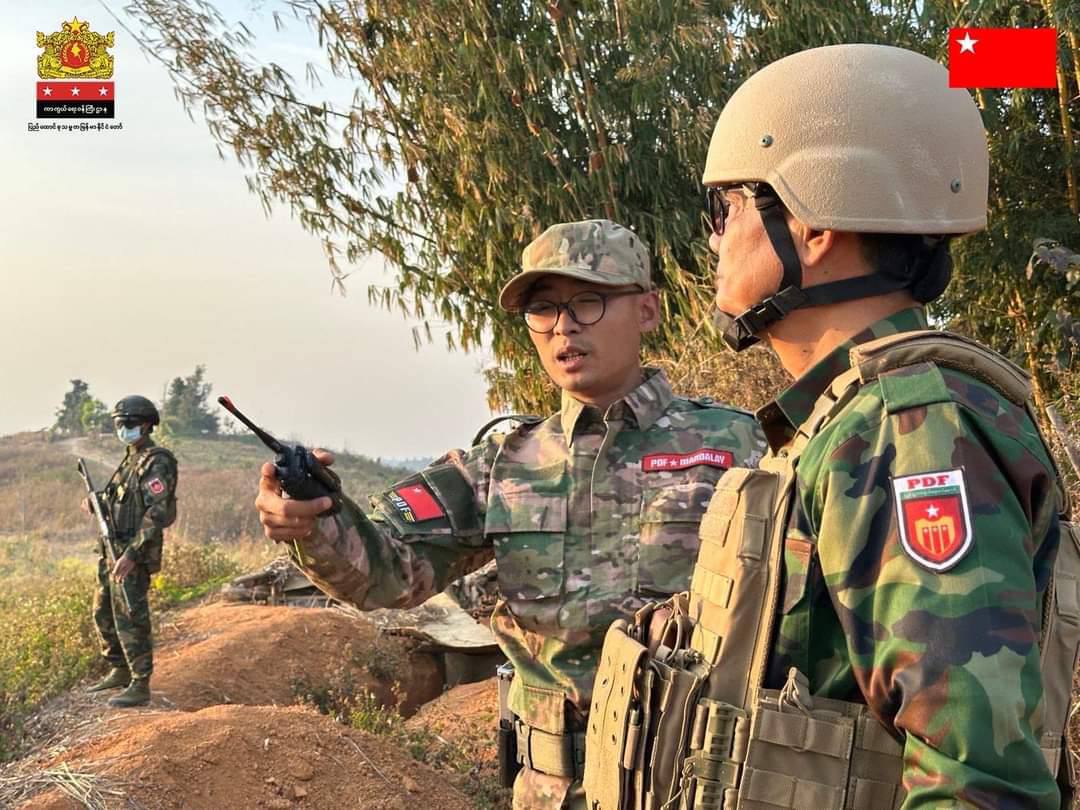
NUG and MDY-PDF leaders seen together
PDF groups that emerged after 2021 have been going to the territories of Ethnic Armed Organizations (EAOs) to receive military training, and are then placed on the front lines to fight and seize the areas the EAOs desire.
In Operation 1027, which saw intense fighting and the seizure of significant territory, the main participating forces—the Kokang Army (MNDAA) and the Ta'ang Army (TNLA)—have now signed ceasefires with the Myanmar military. Furthermore, their withdrawal from and handover of some seized towns back to the Myanmar military have caused disagreements with the joint PDF forces.
Similarly, the Kachin Independence Army (KIA) has utilized the strength of PDFs in the Sagaing Region and Kachin State to launch town-seizing battles and has now secured territories rich in natural resources and trade benefits. However, the KIA is also secretly attempting to contact and negotiate with the Myanmar military, and is currently coordinating a meeting location.
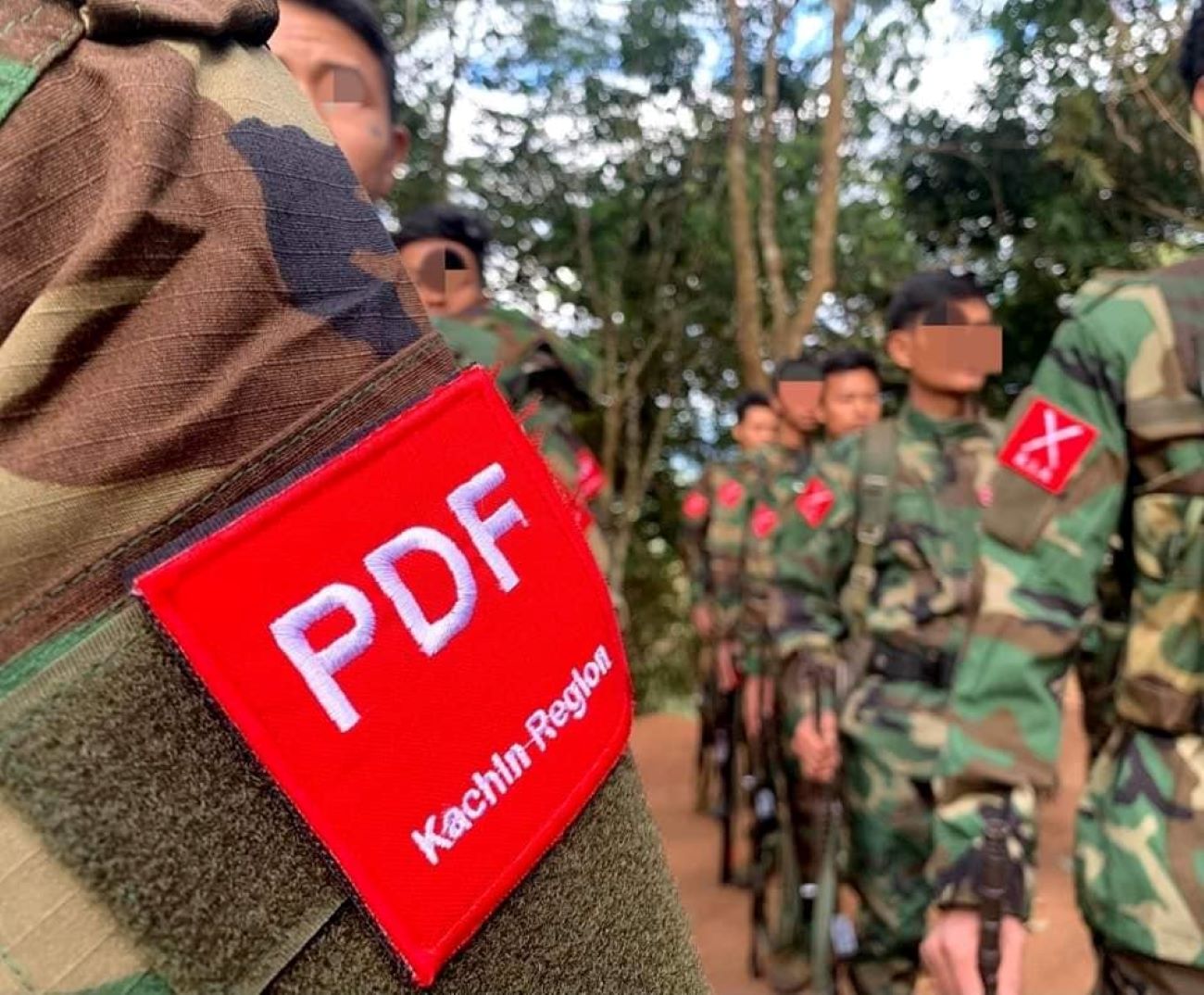
KIA and PDF seen together
Political analyst Sai Mein told CNI News that if groups only look out for their own national interests, the collaborations and alliances will remain artificial.
He commented: "If organizations, including the Military Commission, do not lead with genuine sincerity in our country, the collaborations will be fake. And the Union will be a fake Union. Alliances will become fake alliances. This is because everyone is only looking out for their own national interests. The TNLA is also like that now. The TNLA only looks out for its national interests. It does not consider the interests of the PDFs. It also does not consider the interests of the Union as a whole. So, in the current practical situation, that is how things will remain."
Military and political analysts point out that the EAOs have gained a large number of armed personnel from the PDFs to fight the Myanmar military and seize and control territory.
They further point out that in this scenario, the PDFs are the ones primarily suffering the loss of manpower and damage, while the EAOs reap the political benefits.

- By CNI
- Category: English Section
- Hits: 187
CNI News
14 November 2025
Questions are being raised among military and political analysts about what kinds of opportunities the government should provide to those who have dutifully completed their public conscription service.
The People's Military Service Law (Public Conscription Law) was enforced on February 10, 2024, and training began with monthly batches of 5,000 people each. As of now, the training has reached its 19th intake.
On November 8, Deputy Minister of Labour and Chair of the Committee for Overseas Employment Assignments, U Win Shein, said that those who have successfully completed their conscription service would be supported by the government in finding employment abroad if they wish to work overseas.
Political analyst U Htet Aung Kyaw told CNI News that the government should provide strong benefits and opportunities to those who complete their conscription duties, and that determining what benefits to provide is an important aspect of national policy.
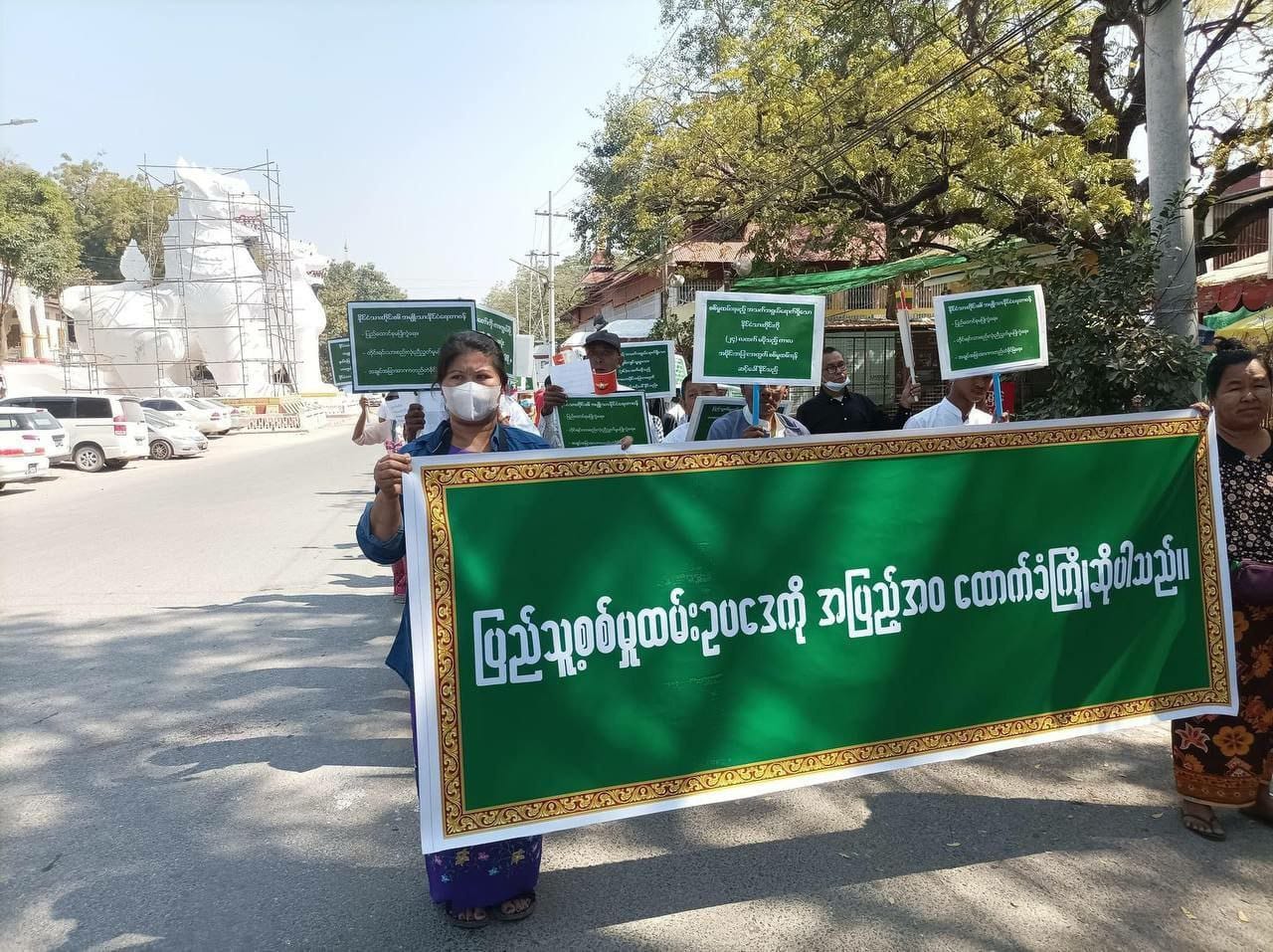
Supporters of the conscription law seen
He said: “Going abroad for work is good, but that alone is not enough. The main thing is to clearly explain what incentives conscripts will receive after completing their service. We welcome the plan to help them find jobs abroad. If I may say this—look at how the United States provides benefits to its veterans. Myanmar should study those systems and offer similar support. There must be real incentives. Why else would people risk their lives? And right now, this conflict is happening among fellow citizens, so people are very distressed. But if this is declared as national policy, then when the government implements it, the incentives to be provided become extremely important. Helping conscripts find overseas jobs is a start, but in my view, it is still not enough. More should be done.”
U Thein Tun Oo, Executive Director of the Institute for Strategy Studies, told CNI News that there is nothing impossible about implementing such a national-level initiative, and that many opportunities could be provided to public conscripts depending on government plans, rules, and regulations.
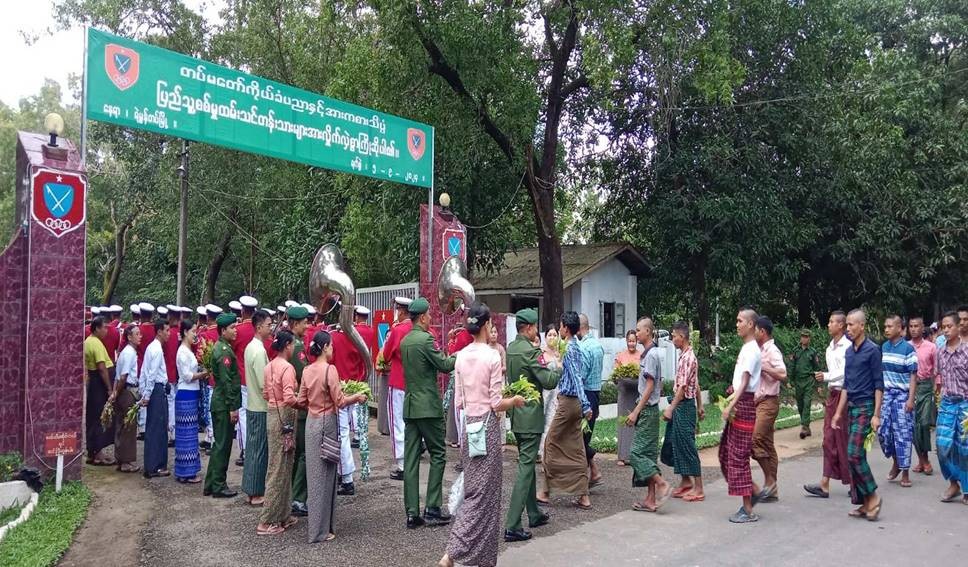
Public conscripts seen
He said:“At the national level, there is nothing that cannot be implemented. The government already connects with external agencies to send workers abroad. So if this is handled systematically at the state level, why would it not succeed? For example, if someone wants to work abroad, or if they left a job to fulfill their conscription duty, they could be given the chance to return to that job. There are many such possibilities. Everything will follow the relevant laws and regulations.”
Currently in Myanmar, both the military and some armed groups are reportedly recruiting and arresting young people for forced conscription, causing significant worry and fear among the general population, according to various assessments.

- By CNI
- Category: English Section
- Hits: 352
CNI News
14 November 2025
Shan armed organizations need to cease fire among themselves just as they have halted military engagements with the Myanmar military(Tatmadaw), political analyst Sai Main told CNI News.
“Shan State cannot achieve peace by only reaching a ceasefire with the military council. Even groups like the RCSS and SSPP, which say they are working for the interests of Shan people, have clashed with each other. So we cannot say similar clashes won’t happen among other armed groups as well. The key point is—just as they can cease fire with the military, they must also cease fire with all the people who live together in the same region. Only then can there be real peace. Right now, it’s not like that. They stop fighting the military, but they still want to fight each other. This is not a good sign,” he said.
The Restoration Council of Shan State (RCSS) is a signatory to the Nationwide Ceasefire Agreement (NCA), while the Shan State Progress Party (SSPP) has signed the preliminary state-level and union-level ceasefire agreements with the government.
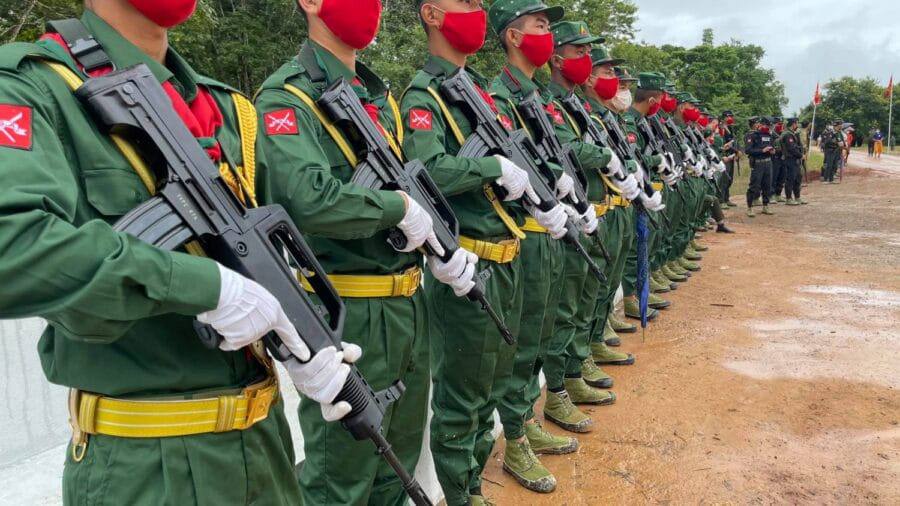
SSPP troops seen
In addition, the SSPP is a member of the Federal Political Negotiation and Consultative Committee (FPNCC), led by the UWSA.
Since 2021, Shan armed groups have neither joined the Myanmar military in joint offensives nor sided with the revolutionary forces to wage war against the military, military and political analysts noted.
Furthermore, groups that collaborated with Spring Revolution forces in urban offensives—such as the Kokang MNDAA and the Ta’ang TNLA in northern Shan State—have also signed ceasefire agreements with the military.
As a result, almost all ethnic armed organizations in Shan State are now under ceasefire arrangements with the Myanmar military, according to analysts.
Despite this, clashes have continued in Shan State—between the RCSS and SSPP, between TNLA and SSPP, and between KIA and TNLA.
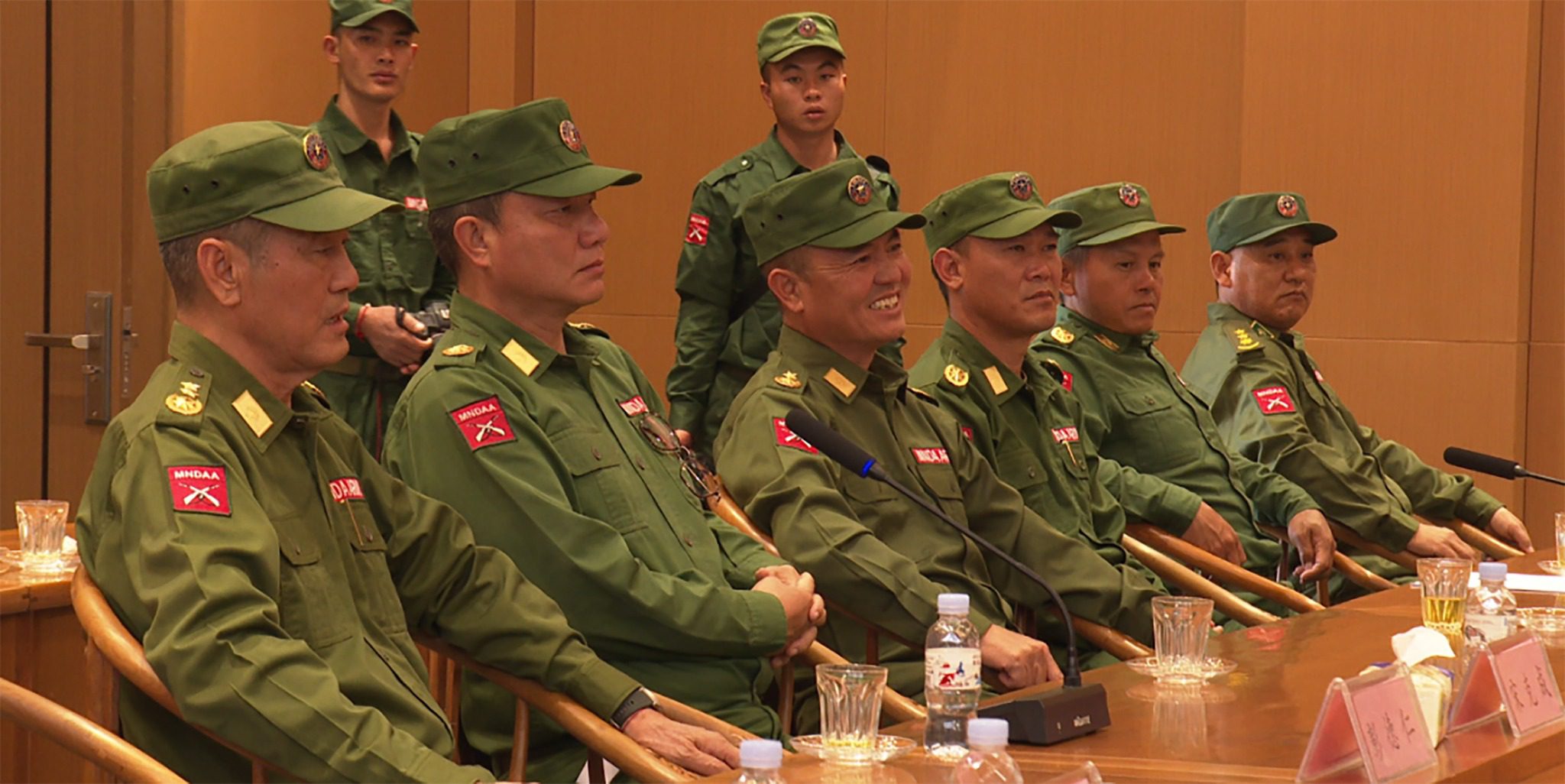
MNDAA troops seen
Political analyst Sai Main told CNI News that only when Shan State’s internal diversity can be united will it be possible to build a union based on unity.
“Although clashes are happening now, judging from social media exchanges, these clashes look set to continue into next year. They are attacking each other online as well. That’s also significant. Just as they ceasefire with the military council, they should also ceasefire among themselves. Only then can they move toward a genuine federal union. Only when Shan State’s diversity can be consolidated will it be possible to build the kind of unity needed for a union. Otherwise, there will never be peace. In reality, the so-called union will only exist in name. Fighting will return, and divisions will remain,” he said.
Shan State is home to many ethnic groups and numerous armed organizations. Since the political changes of 2021, armed conflicts have expanded and intensified, leading analysts to closely monitor the evolving political situation in Shan State.

- By CNI
- Category: English Section
- Hits: 243
CNI News
14 November 2025
Although political parties are preparing to secure the public vote and enter the parliament, they are extremely weak in addressing the difficulties the public is facing, political observers point out.
They note that candidates entering the parliament are running to represent their parties during the election period, and are thus party representatives. However, once they win based on the public vote and enter the parliament, they transform into not only party representatives but also representatives of the people.
Dr. Nyo Nyo Thin, founder of the Yangon Watch Group, told CNI News that some political parties are quite weak in practically addressing the difficulties faced by the public.
She stated, "It is necessary to prove to the youth that this election will bring about positive events, benefits, and results for them. For example, a simple situation exists: in some areas in the regions, there are unlawful military conscription summons. By political parties standing firmly in front of these young people, speaking out and advocating for them, the youth will become interested in the election. If they realize that a candidate is someone who stands with them and can protect their interests, they will become interested in the election. Therefore, political parties need to prove themselves through action. Some political parties are quite weak in providing truly practical assistance, practical solutions, and practically resolving the difficulties of the public."

Armed groups and the people in Myanmar
Currently, the people of Myanmar are facing economic crises, job scarcity, inflation, high commodity prices, high cost of living, insecurity of life, authorities exploiting the Military Service Law to demand money, and displacement due to conflicts.
Political parties are urging people to vote during the election period without being able to stand in front of the public and resolve these issues.
Dr. Nyo Nyo Thin, founder of the Yangon Watch Group, told CNI News that the current time is an opportunity for political parties, and by standing firmly on the side of the people, a win-win situation for both sides could emerge.

Those who are casting their votes
She said, "There are actions that are inconsistent with the law, and it is worse in some regions. In areas where the rule of law is distant and weak, candidates should stand firm on the side of the people, in accordance with the law, and provide protection. This is an opportunity. By uncovering things that are inconsistent with the law and issues where the rule of law is absent, and standing firmly on the side of the people, a win-win situation for both the public and the party could emerge. During the election period, things like the well-being of the public, the proper implementation of the Military Service Law, and if it cannot be implemented according to the law in some areas, those areas should be suspended as an exception."
Political observers point out that election-winning candidates in Myanmar politics, upon entering the parliament, transform from a representative of the people to a party-affiliated representative of the parliament, often driven by party loyalty.
Therefore, political observers recommend that the public needs to carefully scrutinize and select the political parties and candidates entering the election. It is necessary to choose political parties that have candidates who will truly work for the benefit of the public and the nation.

- By CNI
- Category: English Section
- Hits: 323
CNI News
13 November 2025
The second phase of Myanmar’s general election will be held on January 11, 2026, according to Major General Zaw Min Tun, head of the Information Team of the National Defense and Security Council, speaking on November 10, 2025.
He added that the third phase of the election would take place two weeks after the second phase.
“There are only 48 days left until the multi-party democratic general election. The second phase will be held on January 11, 2026, and the third phase will follow two weeks after that,”said Major General Zaw Min Tun.
Myanmar held its first election on November 21, 1922. From 1922 to 1947, six elections were held.
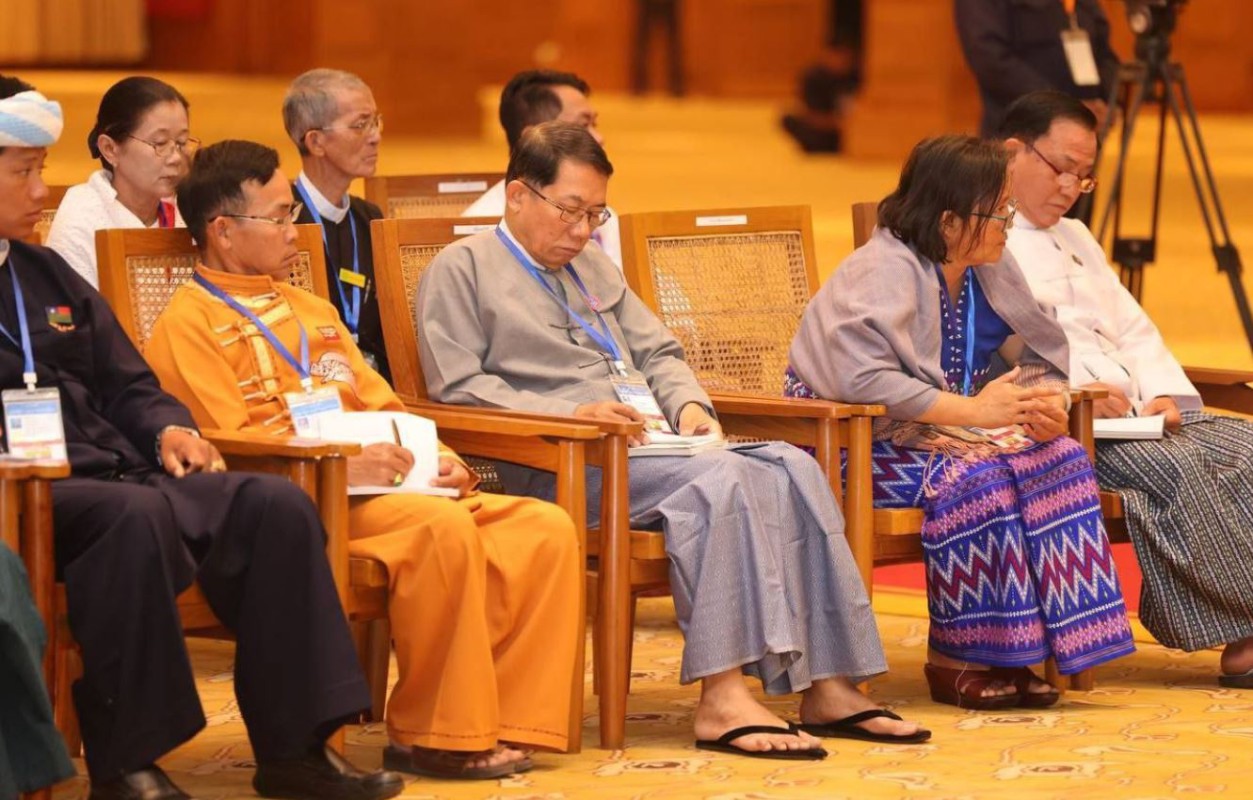
Political parties that will contest in the upcoming election.
During the Parliamentary Era (1948–1962), there were three elections;
under the Burmese Socialist Programme Party (1962–1988), there were four elections; under the State Law and Order Restoration Council (SLORC) and the State Peace and Development Council (SPDC) (1988–2010), one election was held; and during the Democratic Era (2010–present), six elections have been conducted — three general and three by-elections — according to Major General Zaw Min Tun.

- By CNI
- Category: English Section
- Hits: 305
CNI News
13 November 2025
Political analyst Sai Main told CNI News that joint forces of the Kachin Independence Army (KIA) and People’s Defense Forces (PDF) may move in to take control of Momeik Township in northern Shan State, which the Ta’ang National Liberation Army (TNLA) is set to withdraw from.
Following the ninth round of peace talks between the Myanmar military(Tatmadaw) and TNLA, mediated by China, both sides agreed to a ceasefire starting October 29. As part of the deal, TNLA would withdraw its troops from Mogok and Momeik.
However, since the announcement, tensions have risen along the Shan State–Mandalay Region border, and the MDY-PDF has declared that it will not easily relinquish territories captured during the Spring Revolution period.
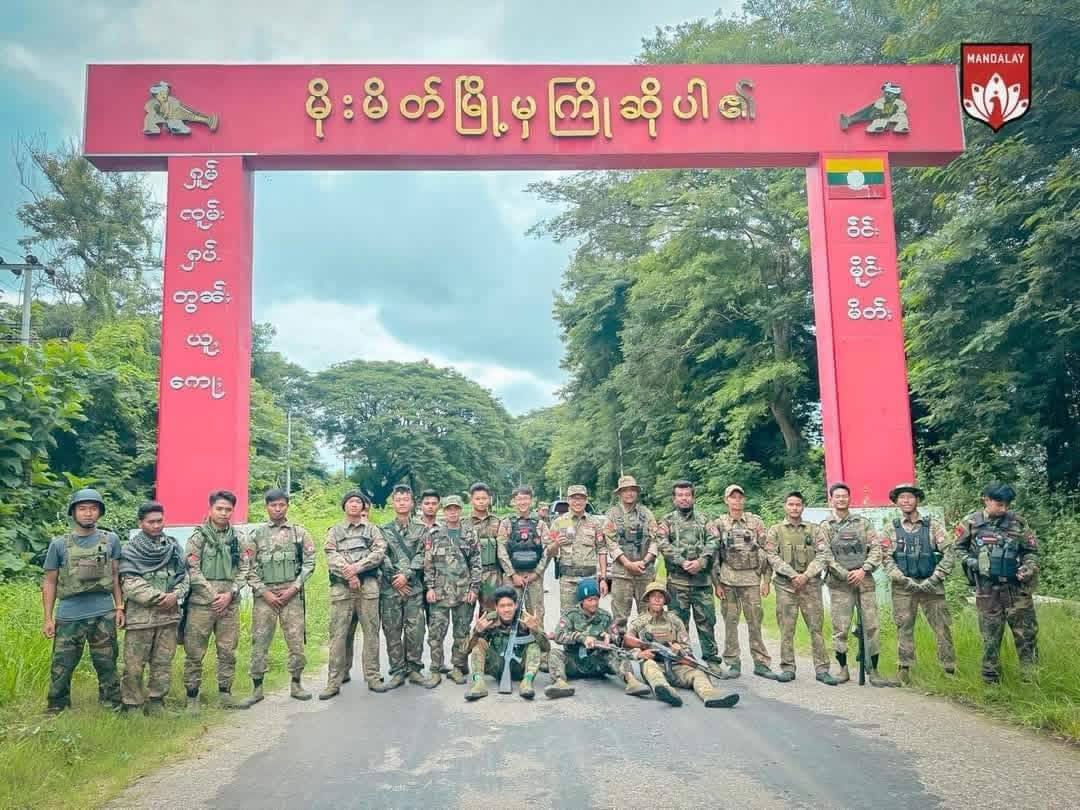
The MDY-PDF comrades
As a result, fierce clashes could break out again between KIA-PDF allied forces and the Myanmar military in the Momeik area, said Sai Main.
“Heavy fighting could erupt around Momeik. Even though TNLA has agreed with the military commission to withdraw, the KIA and PDF forces there will not accept it.Previously, KIA attacked and took control of Momeik for about a week or two before TNLA retook it and incorporated it into its controlled territory. So, KIA and PDF forces might move back in to reclaim positions,and if that happens, clashes with the junta forces are very likely,”
he explained.
In January 2024, during the Operation 1027 campaign, KIA, AA, ABSDF, and KPDF joint forces captured Mabein town north of Momeik, but were later forced to withdraw.
Following TNLA’s recent withdrawal announcement, KIA and PDF units have already begun mobilizing around Momeik District, reportedly for security and positioning purposes.
Currently, TNLA is the only ethnic armed group still engaged in direct fighting with the Myanmar military in Shan State.
However, since a political agreement was reached between the two sides, a ceasefire has now been put in place.
According to analyst Sai Main, this situation means that most ethnic armed groups in Shan State have now halted fighting with the junta, making further large-scale military operations in northern Shan unlikely.
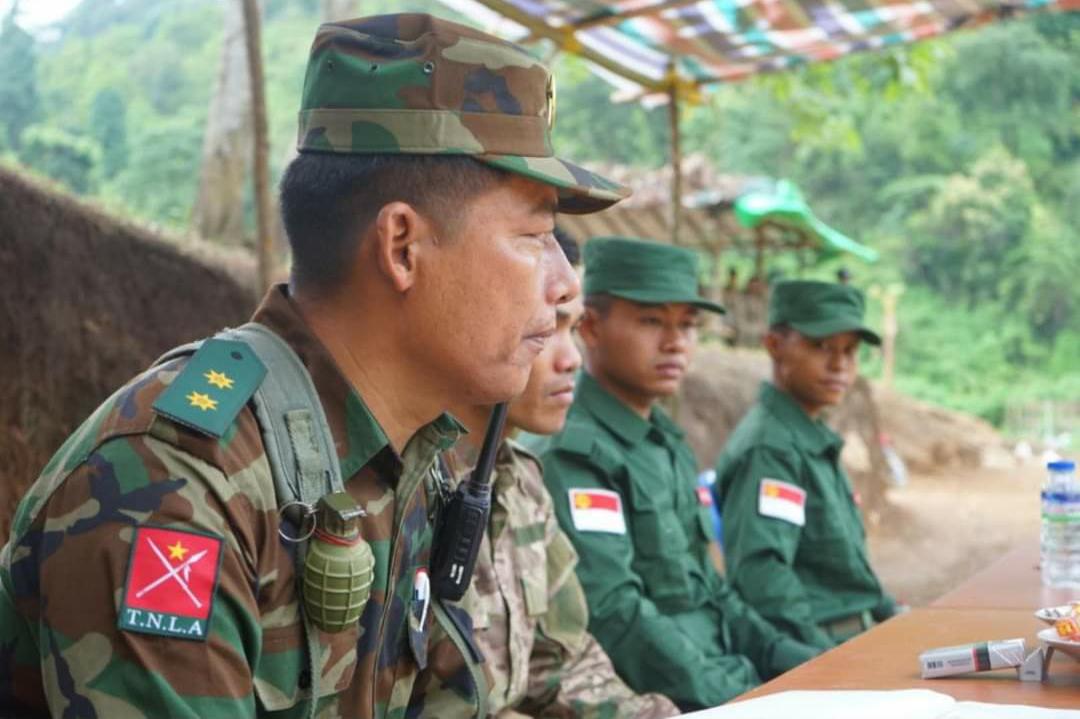
TNLA and PDF troops
“At the moment, TNLA is the only group still actively fighting the junta in Shan State.
The SSPP has already signed a bilateral agreement at the Union level,and the RCSS has signed the Nationwide Ceasefire Agreement (NCA).Given this, I don’t expect to see major fighting in other areas of northern Shan,”, said Sai Main.
Since the 2021 political upheaval, People’s Defense Forces (PDFs) have emerged across the country and have cooperated with ethnic armed organizations (EAOs) to fight against the Myanmar military.
Although these EAO-PDF joint forces were able to capture significant territories, many were later handed back to the military under agreements mediated by neighboring countries during peace talks.
For example, the Myanmar National Democratic Alliance Army (MNDAA) handed back control of Lashio, and although Spring Revolution groups did not publicly oppose that move, questions have been raised by observers about the TNLA’s decision to hand over two towns to the military — a move that many resistance groups did not accept.
Meanwhile, the KIA is reportedly engaged in confidential coordination with the Myanmar military regarding potential peace talks, and both sides have agreed to meet for discussions soon.

- By CNI
- Category: English Section
- Hits: 233
CNI News
13 November 2025
The general public’s struggle to make ends meet has led to waning interest in Myanmar’s upcoming elections, according to political analysts.
The Union Election Commission (UEC) had announced that voter lists for the upcoming elections would be displayed at respective township sub-election commission offices from September 30 to the second week of October 2025.
However, analysts say public trust in the elections has declined since the results of previous elections were annulled due to disputes over voter lists. As a result, many citizens are showing no enthusiasm toward the upcoming polls.
Yangon Watch founder Dr. Nyo Nyo Thin told CNI News that people such as young voters, women, and key working-age groups appear largely uninterested in participating in the election.
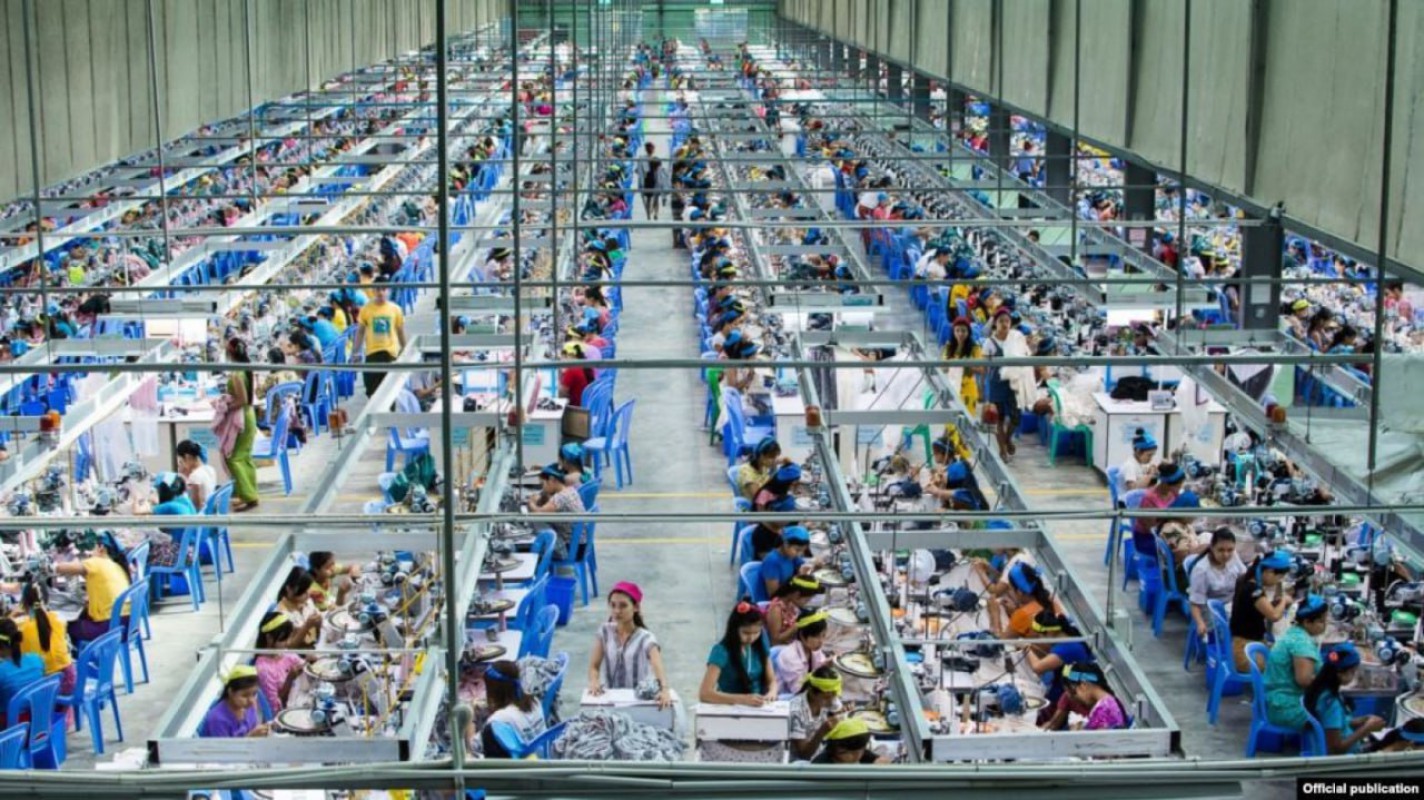
A garment factory in operation.
“Right now, most young people — and even many housewives — are struggling. These groups, including important segments of society like the youth and women, seem to have lost interest in the election. People are focused on surviving, trying to secure better job opportunities and improve their livelihoods. Because of that, interest in the election has significantly declined,” she said.
The first phase of Myanmar’s election is scheduled for December 28, 2025, covering 102 townships, while the second phase is set for January 11, 2026, in 100 more townships.
Chairman of the Arakan Front Party (AFP), Dr. Aye Maung, told CNI News that the central challenge in Myanmar’s politics remains the armed conflict, and resolving it is key to rebuilding the nation’s socio-economic life.
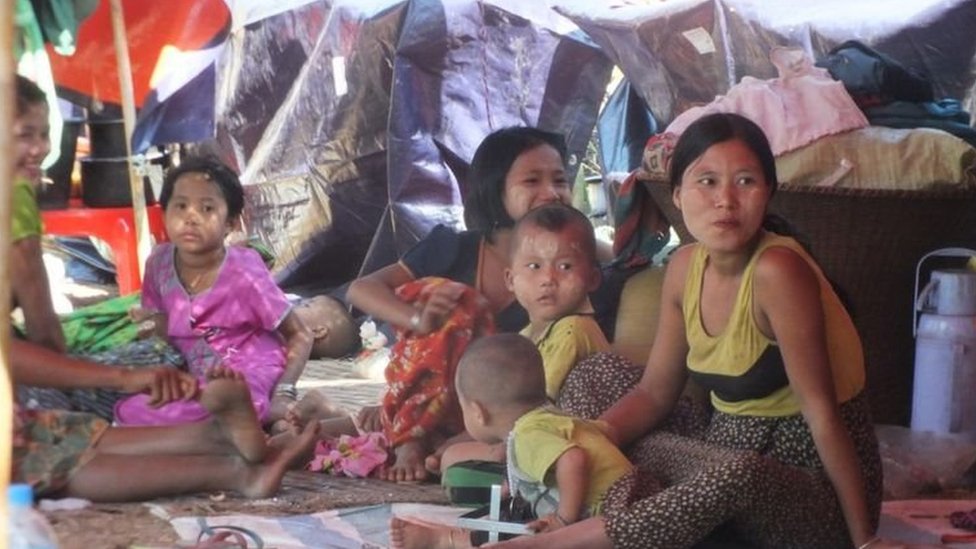
Displaced persons fleeing conflict zones.
“At present, everyone is being pushed toward the path of armed confrontation. But still, the election is the election.So rather than seeing people’s disinterest merely as an effect of economic hardship, I think some middle-aged and older citizens may view the election as a possible path to resolution.Neighboring countries and the international community also seem to be encouraging this direction because of the ongoing suffering caused by the war. The main issue is still how to resolve Myanmar’s armed conflict. Only by doing so can we begin to rebuild social and economic life.The election could become a step toward such change,” he said.
Currently, many citizens are undecided about whether to vote, and the rate of people checking voter lists remains very low.
This situation is attributed to the public’s daily struggle for survival and job opportunities, as well as warnings from Spring Revolution forces that they would boycott and disrupt the election and take action against participants.



